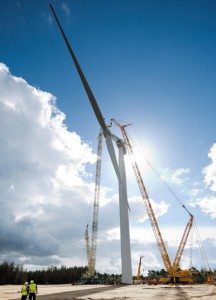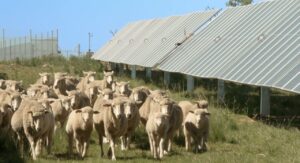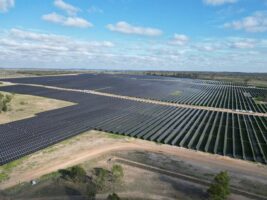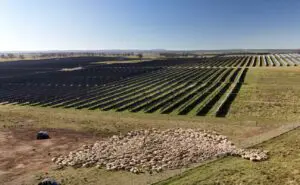A German airborne wind power company’s lofty bid to harness the energy generation potential of “strong and steady” high altitude winds has gained the backing of the German energy giant RWE Renewables.
RWE Renewables and SkySails Power said in a joint statement on Tuesday that the two companies would fly a 120 square-meter “kite” to a height of up to 400 metres above ground as part of a three-year pilot project to evaluate the SkySails Power system technology.
SkySails’ technology works by connecting the massive “kite” to a ground station consisting of a winch with an integrated generator. As the kite rises into the air it pulls rope from the winch and the built-in generator produces electricity from the rotational energy.
Once the rope is completely unspooled, the kite automatically winches itself back in to a position of very low resistance, so that it can be hauled back easily. The generator then acts as a motor operating the winch – a process requiring only a fraction of the energy being generated.
According to RWE, while current airborne wind systems have a maximum capacity of between 100-200kW, the SkySails technology has the potential to boost this to megawatts and thus make it attractive for use in large wind farms.
The promise of high-altitude wind power generation has been pursued by a number of companies around the globe over the past couple of decades, not least the Google-owned “moonshot factory” now known as X.
X in 2014 acquired Makani Power, a US firm developing airborne wind turbines that was co-founded by Australian Saul Griffith, in the belief that the company’s “kite-power” prototype had opened the door to a “radical new approach” to wind energy.
“They’ve turned a technology that today involves hundreds of tons of steel and precious open space into a problem that can be solved with really intelligent software,” said then Google X director Astro Teller. “We’re looking forward to bringing them into Google.”
Another airborne energy contender, the Dutch Ampyx Power, won the backing of European energy giant E.ON, which in 2017 committed to test Ampyx’s 2MW Airborne Wind Energy System (AWES) at a test site it was developing in Ireland.
Proponents of airborne wind technology list its benefits – over and above those of traditional wind generation technology – to include a decreased visual and auditory impact (and therefore leading to less NIMBYism); greater energy output; and a strong and steady wind resource.
“The light compact design of airborne wind energy systems means that the impact on people and the environment is minimal,” said Stephan Wrage, CEO of SkySails Power, in a statement this week.
“The systems work very quietly, practically have no visible effect on the landscape and barely cast a shadow. This makes our SkySails technology an exciting alternative to traditional renewable wind power generation.”
Katja Wünschel, COO of wind onshore and photovoltaic Europe & Asia-Pacific at RWE Renewables, said the company was delighted to be helloing to putt SkySails’ “innovative, environmentally friendly technology” into operation for the first time.
“It has the potential for onshore as well as offshore use and to complement conventional wind power turbines in this way,” Wünschel said.
“This pilot project is not just intended to expand the decentralised supply of energy from renewable sources, it also has great potential in terms of helping RWE to make its power generation completely climate-neutral by 2040,” added Sven Utermöhlen, RWE Renewables head of wind offshore global.










